I'm making calls to an external API and want to deal with the event that a call returns an Unauthorized HttpResponseMessage. When this happens I want to refresh the access token and make the call again.
I'm trying to use Polly with the following code:
public async Task<HttpResponseMessage> MakeGetRequestAsync()
{
var retryPolicy = Policy
.HandleResult<HttpResponseMessage>(r => r.StatusCode == HttpStatusCode.Unauthorized)
.Retry(1, (exception, retryCount) =>
{
RefreshAccessToken();
});
var result = await retryPolicy.ExecuteAsync(() => CallApiAsync());
return result;
}
private async Task<HttpResponseMessage> CallApiAsync()
{
var url = Options.ResourceSandboxUrl;
var httpClient = new HttpClient();
SetRequestHeaders(httpClient);
var response = await httpClient.GetAsync(url);
response.StatusCode = HttpStatusCode.Unauthorized;
return response;
}
I put breakpoints on the
ExecuteAsyncstatement and inDoSomethingAsync- when I step overExecuteAsyncDoSomethingAsyncis not called and control is returned to the function that calledMakeGetRequestAsync
I don't understand why DoSomethingAsync is not called - can anyone help me with what I'm trying to achieve?
I've looked at the Polly documentation & Polly questions on Stack Overflow but I can't figure out what's going on..

